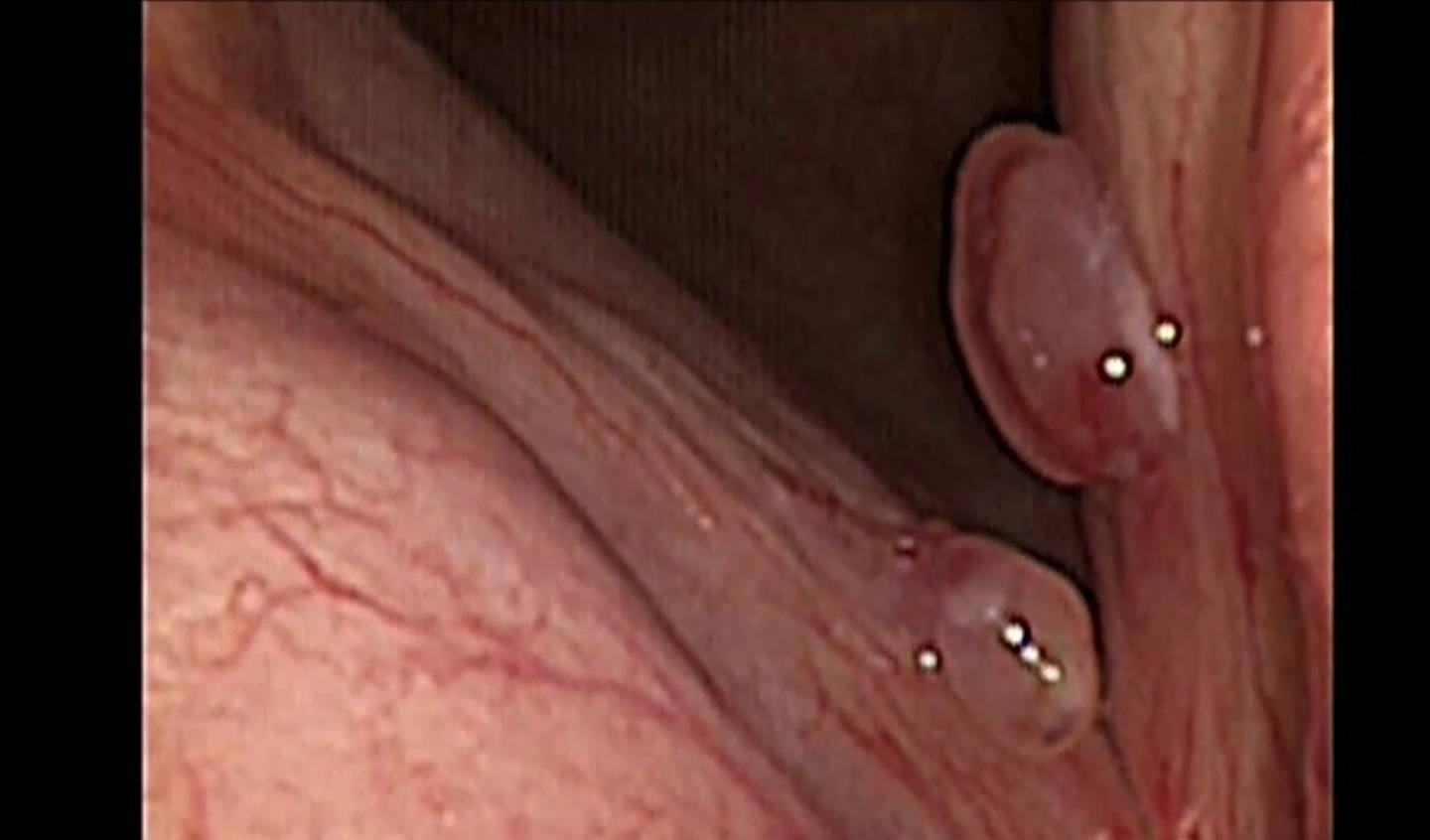
Vocal cord polyps are benign (noncancerous) swelling of greater than 3mm that arise from free edges of true vocal cords, localized area of edematous tissue, usually unilateral. Some may be angiomatous and contain areas of hemorrhage.
Clinical features of Vocal cord polyps
- Vocal cord polyps are usually solitary, but can occasionally affect both vocal cords.
- Most common structural abnormality that causes hoarseness.
- Predominance of men (> 55%)
- Most common in smokers between age 30-50years
Etiology
- Exact cause unknown.
- Phonotrauma (voice abuse) is considered as an etiology for vocal cord polyps
- Other chronic irritating etiologies like gastroesophageal reflux, smoking, aspiration of aggressive chemical substances, or intense respiratory activities may also contribute to the emergence of polyps.
- Excessive mechanical trauma in cases of unilateral or bilateral vocal fold paresis
- Polyp recurrence are noted in the presence of sulcus vocali.
Presenting complaints
- Hoarseness, breathiness of voice and vocal fatigue.
- Lowered pitch, cuts out in speech and strain to speak.
- Large polyps can cause chocking and respiratory problems – which are usually rare
Examination
- On laryngoscopic examination, vocal cord polyps may appear hemorrhagic or gelatinous and grey colored.
- Shape can be classified as sessile or peduncular.
- Occasionally a sulcus, mucosal bridge or intercordal cyst is found immediately opposite on the other cord.
- Disordered vibration and stiffness of vocal cords makes it more likely to damage other vocal cord causing localized trauma and polyp formation.
- Histologically appears as gelatinous or translucent, fibrous or organized, and angiomatous or hemorrhagic.
Histopathology
- Disruption to vascular basement membrane leads to capillary proliferation and thrombosis which later leads to minute hemorrhages and fibrin exudation.
- Site of lesion is superficial to vocal ligament.
- Recently studies have identified significant presence of ADAM33 protein in vocal polyp tissues. This protein is a disintegrin and metalloproteinase protein related to angiogenesis and tissue remodeling and may be an important factor for the development of chronic inflammation in the vocal folds.
Differential diagnosis
- Vocal cord nodule, Polypoid nodule – Differentiation is difficult clinically and HPE – treatment based on patient symptoms and clinical grounds.
- Reinke’s Edema.
Treatment of Vocal cord polyps
- Can shrink spontaneously or even be coughed up.
- Voice therapy – helps patients to cop up, preventive advices, but won’t cause resolution.
- Speech therapy as a primary treatment of polyps, followed by surgery when the lesions are persistent or if the patients are dissatisfied with their vocal quality.
- Percutaneous corticosteroid injection to polyps may help to delay or to avoid laryngeal surgery but does not substitute it.
- Treatment of concomitant inflammation and anti reflux measures.
- While voice therapy, voice rest, and/or sometimes observation alone can be management strategies for a vocal cord polyp, microlaryngoscopy with phonosurgical excision is currently the standard treatment for restoration of voice.
- Gentle, steady traction is applied by grasping forceps towards the opposite cord and base of polyp cut with micro scissors / lasers.
- Preservation of mucosa and superficial lamina propria is important.
- Voice rest for 48-72 hours
- The aim is to restore smooth edge of vocal cord allowing them to close fully and vibrate normally.
- Research on targeted therapy against ADAM33 etc. is ongoing.